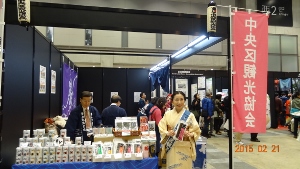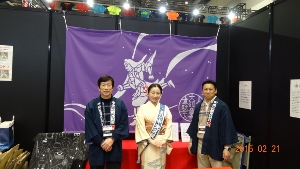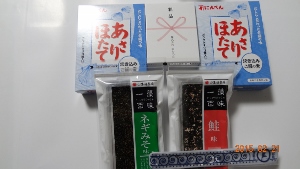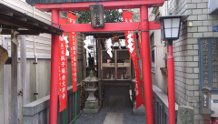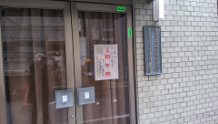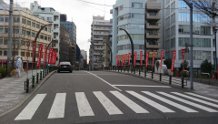 It was the early morning of December 15, 1702 that Nanji Akaho entered the Honjo Kira House and gave Uenosuke's leadership, and in the Christian era it was just about 312 years ago on January 31, 1703. did. It seems that the cold weather was very severe this year.
It was the early morning of December 15, 1702 that Nanji Akaho entered the Honjo Kira House and gave Uenosuke's leadership, and in the Christian era it was just about 312 years ago on January 31, 1703. did. It seems that the cold weather was very severe this year.
By the way, among the forty-seven men, along with the chief Oishi built-in assistant, the top winner in popularity voting and general election is Taketsune Horibe (1670-1703). He is known as the hero of Baba's decisive sword in Takada's Baba, who struggles as an enemy radicalist in the Akaho incident, and continues to live in the world of plays, talks, and movies after his death. Recently, I went back in time to a TV commercial for corporate PR, and I was surprised.
Many people may have seen "Horibe Yasubei Takeyuki Monument", which engraves his achievements, in Nishizume, Kameshimabashi, Chuo-ku. (1-14 Hatchobori) It seems that it was built in 1969 by Hatchobori 1-chome Town Association. Why is it built here? The monument says, "It seems that this is the basis because Anbei lived in the Confucian Jiro Hosoi Daio family in Mizutanicho, Kyobashi. In the Edo period, there was "Mizutanicho" at Hatchobori 1-chome and 2-chome. However, "Kyobashi Mizutanicho" was not there, but it was in the current Ginza 1-chome (around Mizutanibashi Park), but it was fired and moved to Hatchobori in 1719 (1719). Therefore, there was no Mizutanicho in Hatchobori yet in Genroku period, where Anbei lived. The people of Hatchobori 1-chome Town Association probably built a monument because Anbei lived in Mizutanicho, Kyobashi, the hometown of Mizutanicho (although it seems to be a very short time).
Yasubee Horibe has the image of "Kenka Anbei" or drinking sake, but it is extremely gentle and cute for children, and is so honest that he can't say, there is no blood connection to his father-in-law Yahee. There is a reputation that he is very similar to his waist and aspirations, and he seems to be a rough young man who is never told. (There is a theory that it was Shimodo as well as Yahee.) Did such a personality be loved by the surroundings and become a popular one, and later become a monument to Showa?
By the way, Jiro Hosoi Daio (No. Hirosawa) (1658-1735) in the inscription that he lived in Kyobashi Mizutanicho, but he has earned his name in history as a Confucian scholar, calligrapher, and seal engraving artist. Haiku, martial arts, guns, art, art, art, art, and art. He met Anbei, who was 12 years younger, at Horiuchi Genzaemon Dojo, a swordsmanship memorial style, and has continued his deep friendship since then. With thorough support at the time of the debate, Horibe father and son are asked for their opinions on the draft of the letter of intent for the debate, "A Asanouchi Takumi Ikiguchigami". On the night of the debate, he climbed to the roof of his home in Fukagawa Hachiman-cho, and seemed to wake up until dawn to see if the fire was rising at Honjo Kira's residence. After the Gishi's stomach, important historical materials such as "Takeyo Horibe" and Yasubei's relics (Kagete) were entrusted to Hirosawa.
 The grave of the Kotaku Hosoi family is located at Manganji Temple, which is powered by Setagaya. main hall's "Manganji" is the book of the child's calligrapher Kusa. This temple is the origin of Kira Setagaya, and it is strange that he has the same family as Uenosuke, the enemy of the defeat he supported. . In his later years, Kaishu Katsu gave Kotaku Hosoi to one of the outstanding figures since the Edo era, and described "I do not know because I hide in the book." He appreciates him. It seems certain that he lived in Nihonbashibakurocho when he was young, so it would be nice to have his memorial monument in the ward.
The grave of the Kotaku Hosoi family is located at Manganji Temple, which is powered by Setagaya. main hall's "Manganji" is the book of the child's calligrapher Kusa. This temple is the origin of Kira Setagaya, and it is strange that he has the same family as Uenosuke, the enemy of the defeat he supported. . In his later years, Kaishu Katsu gave Kotaku Hosoi to one of the outstanding figures since the Edo era, and described "I do not know because I hide in the book." He appreciates him. It seems certain that he lived in Nihonbashibakurocho when he was young, so it would be nice to have his memorial monument in the ward.
[Snake foot] Kotaku Hosoi's mansion was located in Kyobashi Mizutanicho, and that Yasubee Horibe lived there, could not be found in Hirosawa's biography, chronology, or books related to Gishi. If you know what can support the text of the monument, please let us know.
[On the photo] "Horibe Yasubei Takeyuki Monument" of Nishizume Kameshima Bridge
[Lower photo] Tomb of Kotaku Hosoi at Manganji Temple
